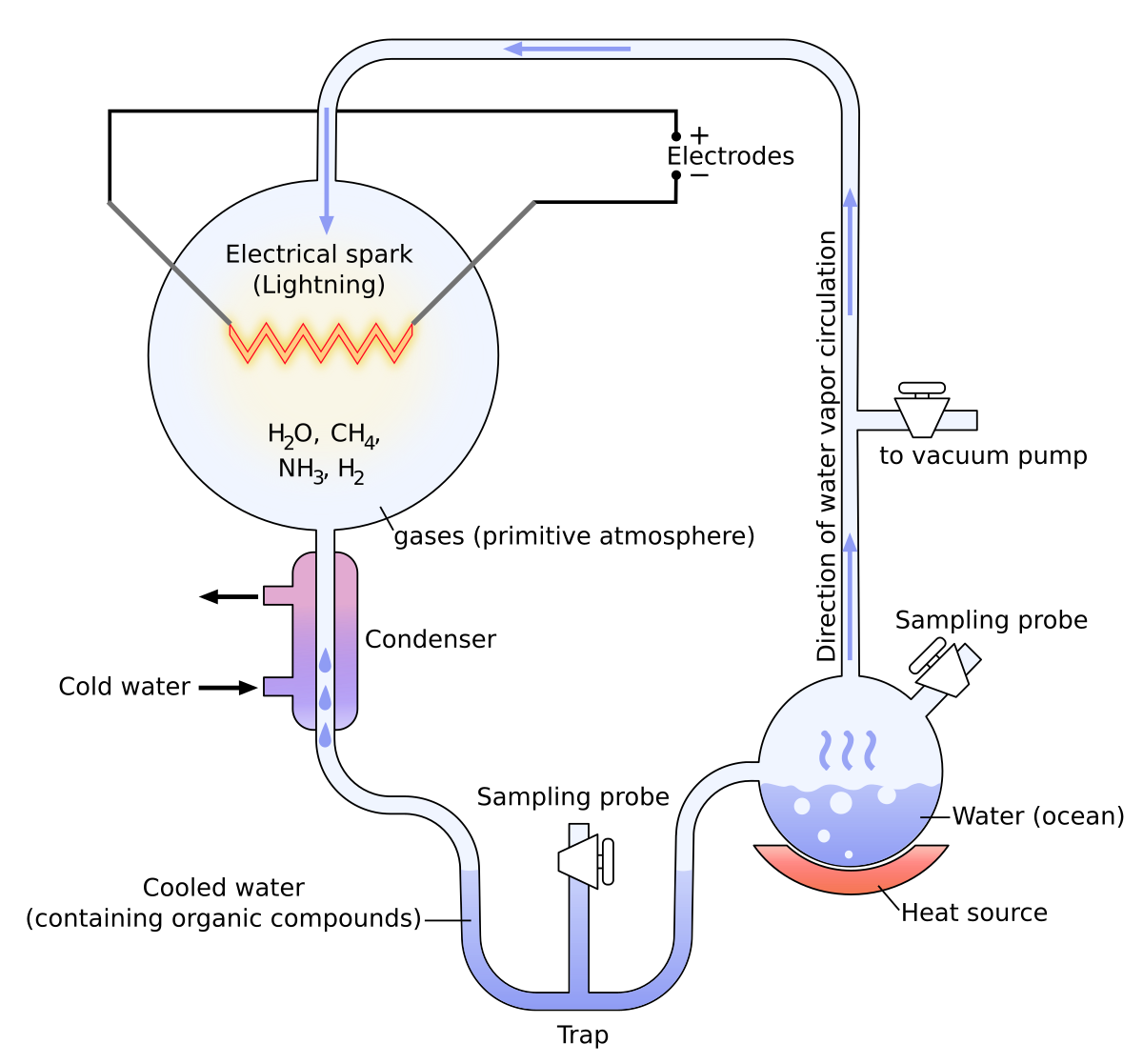The
Miller–Urey experiment[1] (or
Miller experiment[2]) is a famous chemistry
experiment that simulated the conditions thought at the time (1952) to be present in the atmosphere of the
early,
prebiotic Earth, in order to test the hypothesis of the
chemical origin of life under those conditions. The experiment used water (H2O), methane (CH4), ammonia (NH3), hydrogen (H2), and an electric arc (the latter simulating hypothesized lightning).
At the time, it supported
Alexander Oparin's and
J. B. S. Haldane's hypothesis that the hypothesized conditions on the primitive Earth favored chemical reactions that synthesized more complex
organic compounds from simpler inorganic precursors. One of the most famous experiments of all time, it is considered to be groundbreaking, and to be the classic experiment investigating
abiogenesis. It was performed in 1953 by
Stanley Miller, supervised by
Harold Urey at the
University of Chicago, and published the following year.
[3][4][5]
After Miller's death in 2007, scientists examining sealed vials preserved from the original experiments were able to show that there were actually well over 20 different
amino acids produced in Miller's original experiments. That is considerably more than what Miller originally reported, and more than the 20 that naturally occur in the genetic code.
[6] More recent evidence suggests that Earth's original atmosphere might have had a composition different from the gas used in the Miller experiment, but prebiotic experiments continue to produce
racemic mixtures of simple-to-complex compounds—such as
cyanide—under varying conditions.
[7]



